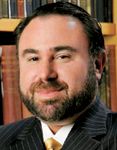- General Dermatology
- Eczema
- Chronic Hand Eczema
- Alopecia
- Aesthetics
- Vitiligo
- COVID-19
- Actinic Keratosis
- Precision Medicine and Biologics
- Rare Disease
- Wound Care
- Rosacea
- Psoriasis
- Psoriatic Arthritis
- Atopic Dermatitis
- Melasma
- NP and PA
- Skin Cancer
- Hidradenitis Suppurativa
- Drug Watch
- Pigmentary Disorders
- Acne
- Pediatric Dermatology
- Practice Management
- Prurigo Nodularis
Article
Uses for PDT rapidly evolving
National report — The current status of photodynamic therapy (PDT) in the United States is really status quo — that's the assessment of dermatologist Michael Gold, M.D., founder of the Gold Skin Care Center, The Laser and Rejuvenation Center, Tennessee Clinical Research Center and Advanced Aesthetics Medi Spa of Nashville, Tenn.

Dr. Gold says he's on the opposite side of the curve - using PDT daily in his practice.
Although that isn't common yet for most dermatologists, he does expect it to get there as light therapy becomes more understood and doctors become more comfortable with its use.
Dr. Gold says doctors are still learning about PDT and need to learn how to use it best, as well as know what to expect.
He views PDT as chemoprevention and says there's nothing else out there quite like it.
"My first job when I take care of patients is to look for actinic damage, actinic keratoses and make sure they don't have skin cancers. That's my first responsibility as a dermatologist - to make sure we're not dealing with skin cancer. If something looks suspicious, I make sure we get a histological diagnosis and start preparing the skin.
"Once I assess the damage, we need to reverse the damage. Probably the most exciting area of PDT to me is its potential as a chemopreventative agent.
"So, routinely, after we clean up our patients, we have them do prophylactic aminolevulenic acid (ALA) treatments. If it's an elderly patient who is not interested in taking care of lines and wrinkles, we use Levulan and blue light - and if there are even one or two actinic keratoses - insurance will cover it."
Dr. Gold notes that if he uses intense pulse light (IPL) or a vascular laser as the light source for treating lines and wrinkles and the treatment is strictly for rejuvenation, then it is a cash payment - but it works incredibly fast in the rejuvenation process.
Dr. Gold, who works as a consultant for Dusa Pharmaceuticals, manufacturer of Levulan, explains that adding ALA to IPL treatments will provide rejuvenation results in half the number of treatments. He says the patient may need six treatments with IPL alone, but can get the same results with as few as one, two or three treatments when it's combined with ALA.
When approaching facial rejuvenation, Dr. Gold says the best use of PDT can be in combination with a variety of therapies.
"Using PDT on its own is fine, but when you start combining your favorite technology - whether that be ThermaCool™ from Thermage or the Titan from Cutera or Aluma from Lumenis - with ALA-PDT, and then the patient needs a little Botox (Allergan) and a little Restylane (Q-Med) - then boom, I've used the whole gamut of things in this combination approach and that is the best way to do this."
Dr. Gold thinks the use of PDT will only increase as people become more familiar with its possibilities. It may only be Food and Drug Administration (FDA) approved for actinic damage and actinic keratoses at this point, but acne and skin rejuvenation are in clinical trials right now, and he says those are just the tip of PDT's potential.
"It works for acne, it works for sebaceous gland hyperplasia, it works for warts; it works for molluscum; it works for hidradenitis suppurativa, it works for psoriasis, it works for Bowen's disease, and it works for nonmelanoma skin cancers. The sky is the limit - we just have to figure it out."





